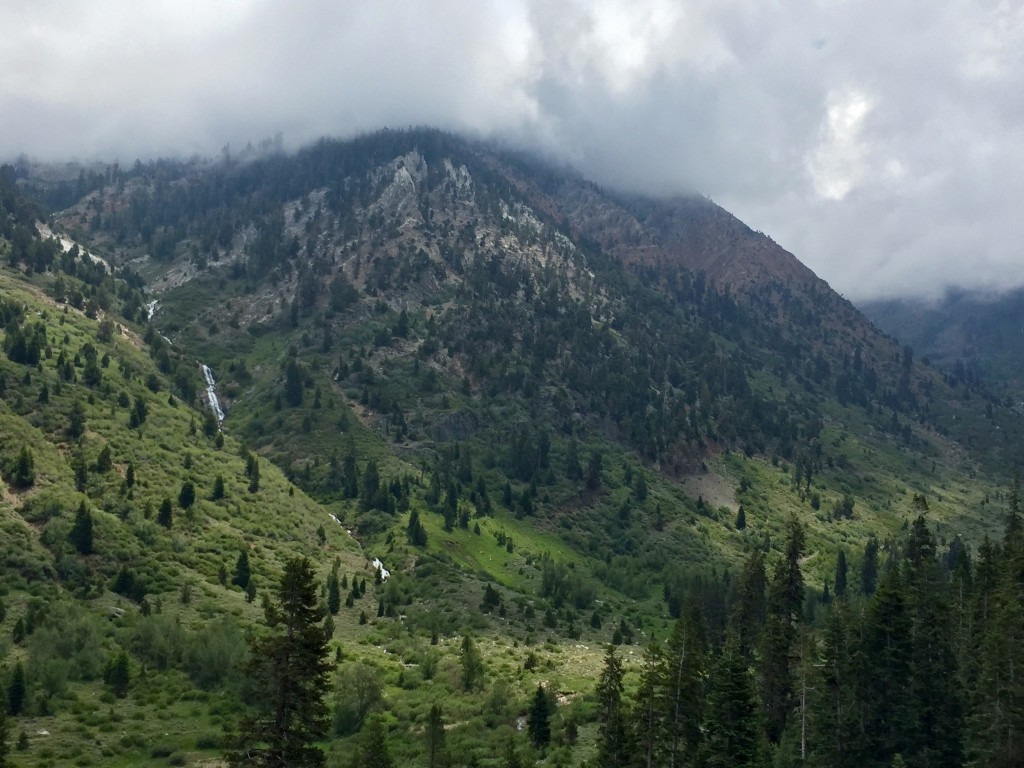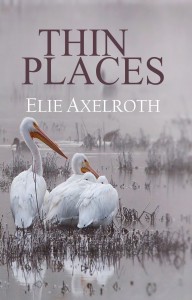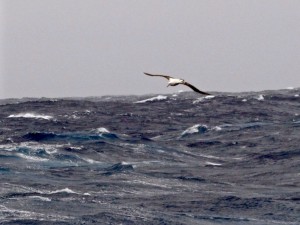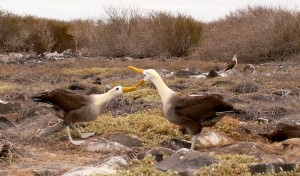For my Sierra Sisters
Gertrude’s afraid of heights, so hiking up a mountain at 7000 feet wasn’t her idea of fun—no matter we were in Sequoia National Park among the giant redwoods, and chocolate lilies, and still-flowing waterfalls in our otherwise drought-stricken California. Eagle Lake is 3.4 miles out of Mineral King, steep and straight up the mountainside. Honestly, I didn’t blame her. Grayish-blue thunder clouds were lifting up out of the horizon; the wind was scattering pine needles and bark in swirls outside our cabin. But there was a sinkhole we wanted to see, and we’d come a long way just to hang out in the cabin all day.
Across the bridge, we stopped long enough for a group photo, then up the damp trail, with a fine view of a cascading waterfall across the meadow. It started to rain, but not to be deterred by a little weather, we trooped on. At the fork in the road, we turned toward Eagle Lake, a steep open-faced climb. That’s when the wind picked up and the sky rumbled. It started to hail, the size of large spitballs, wet and sticky and cold. The wind whipped at my hat, and the rumbling turned to claps of thunder over our heads. I wondered how well my raincoat was going to hold up. I’m certain I wasn’t the only one of my hiking Sierra Sisters thinking about lightning spreading across the bare granite rock. Is it better to stand in a grove of soaring redwoods? Or out in the open?
But the sinkhole beckoned.
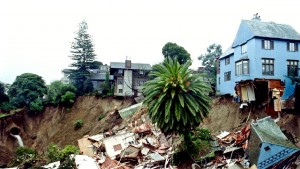
Sea cliff neighborhood, San Francisco 1995. Photo from Business Insider
A number of years ago I’d read a story about a house in San Francisco, swallowed up by a sinkhole. The homeowner, a middle-aged man looking weak and forlorn, had been photographed standing amidst the rubble of broken furniture and dashed hopes. Was he thinking about grandmother’s china? His slides of Machu Picchu? The call he’d have to make to his insurance agent? There’s something fascinating—and horrifying—about sinkholes, large chunks of earth that unexpectedly vanish.
What about those eight vintage Corvettes swallowed up in a Kentucky museum last year?
As I understand it, there are essentially two kinds of sinkholes: the ones that form naturally due to erosion of softer, more porous rock underneath the surface rock. These sinkholes are caused by floods, earthquakes, a dissolving salt bed, an underground stream. And then there are sinkholes caused by human activity: mining, a water main break, over-use of ground water. I can’t help but worry about the diminishing water table in California. Will we all be swallowed up by our lack of foresight?
The sinkhole on the trail to Eagle Lake is the former, a naturally occurring stream headed downward from the steep side of the mountain. When we reached the lip of the sinkhole, we peered over gingerly, aware of the slippery, loose rocks and the tiny pellets of hail now covering the ground. A pool of water, that should have been quite sizable given the flow from the stream, was hardly enough to bathe in. Where does all that water go? No one knows for sure. After taking a couple of pictures and looking up at the sky one more time, we headed back to our cabin to sit by the fire and play Charades.
Despite knowledge to the contrary, we count on repetition in our quotidian lives. Oatmeal for breakfast at 7 a.m. Maple blossoms in the spring. The sun rising, the waxing and waning of the moon. Our steady heartbeat. And the ground beneath our feet, perhaps rumbling, but disappearing altogether?
It’s not anything I ever considered. Until now.
Have any stories about sinkholes? I’d love to know. And see Thin Places for my debut novel available in paperback on Amazon and your favorite e-readers.
